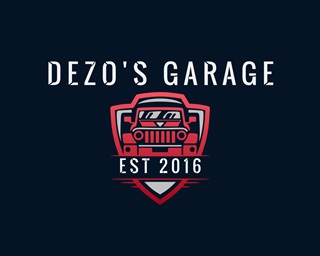Subaru History

Fuji Heavy Industries started out as The Aircraft Research Laboratory in 1915, headed by Chikuhei Nakajima. In 1932, the company was reorganized as Nakajima Aircraft Company, Ltd and soon became a major manufacturer of aircraft for Japan during World War II. At the end of the Second World War Nakajima Aircraft was again reorganized, this time as Fuji Sangyo Co, Ltd. In 1946, the company created the Fuji Rabbit motor scooter with spare aircraft parts from the war.[9] In 1950, Fuji Sangyo was divided into 12 smaller corporations according to the Japanese Government's 1950 Corporate Credit Rearrangement Act, anti-zaibatsu legislation. Between 1953 and 1955, four of these corporations and a newly formed corporation decided to merge to form Fuji Heavy Industries. These companies were: Fuji Kogyo, a scooter manufacturer; coachbuilders Fuji Jidosha; engine manufacturers Omiya Fuji Kogyo; chassis builders Utsunomiya Sharyo and the Tokyo Fuji Dangyo trading company.[10]
Kenji Kita, CEO of Fuji Heavy Industries at the time, wanted the new company to be involved in car manufacturing and soon began plans for building a car with the development code-name P-1. Mr. Kita canvassed the company for suggestions about naming the P1, but none of the proposals was appealing enough. In the end he gave the company a Japanese name that he had "been cherishing in his heart": Subaru, which is the name of the Pleiades star cluster in Japanese. The first Subaru car was named the Subaru 1500.[11] Only twenty were manufactured owing to multiple supply issues. Subsequently, the company designed and manufactured dozens of vehicles including the 1500 (1954), the tiny air-cooled 360 (1958), the Sambar (1961), and the 1000 (which saw the introduction of the Subaru boxer engine in 1965).
Nissan acquired a 20.4% stake in Fuji Heavy Industries, Subaru's parent company, in 1968 during a period of government-ordered merging of the Japanese auto industry in order to improve competitiveness under the administration of Prime Minister Eisaku Sato. Nissan would utilize FHI's bus manufacturing capability and expertise for their Nissan Diesel line of buses. In turn many Subaru vehicles, even today, use parts from the Nissan manufacturing keiretsu. The Subaru automatic transmission, known as the 4EAT, is also used in the first generation Nissan Pathfinder. While under this arrangement with Nissan, Subaru introduced the R-2 (1969), the Rex and the Leone (1971), the BRAT (1978), Alcyone (1985), the Legacy (1989), the Impreza (1993) (and its WRX subtype), and the Forester (1997).
Upon Nissan's acquisition by Renault, its stake in FHI was sold to General Motors in 1999. Troy Clarke, of General Motors served as representative to Fuji Heavy Industries on their corporate board. During that time, Subaru introduced the Baja (2003), and the Tribeca (2005). The Subaru Forester was sold as a Chevrolet Forester in India in exchange for the Opel Zafira being sold as a Subaru Traviq in Japan. Also, the Chevrolet Borrego concept was presented in 2002, a crossover coupe/pickup truck being derived from the Japanese-market Legacy Turbo platform. During the brief General Motors period, a "badge engineered" Impreza was sold in the United States as the Saab 9-2X. An SUV (Subaru Tribeca / Saab 9-6X) was also planned[12][13] but the Saab version did not proceed, and styling was recycled in the 2008 Tribeca refresh.[14]
GM liquidated their holdings in FHI in 2005. Nearly all Saab-Subaru joint projects were dropped at that time, other than Subaru supplying parts for the Saab 9-2x.[15] Toyota Motors bought a little over 40% of GM's former FHI stock, amounting to 8.7% of FHI. (The rest of GM's shares went to a Fuji stock buy-back program.)[15] Toyota and Subaru have since collaborated on a number of projects, among them building the Toyota Camry in Subaru's Indiana U.S. plant beginning in April 2007.[16] Subaru introduced the Exiga in 2008.
Toyota increased their share of FHI to 16.5% in July 2008.[17] Subsequently, Toyota and Subaru jointly developed the Toyota 86, first sold in January 2012 as the Subaru BRZ and by Toyota under various names.
Subaru of America was established in 1968 in Philadelphia by Malcolm Bricklin and Harvey Lamm. It relocated to Pennsauken, New Jersey shortly thereafter and moved to its current headquarters in Cherry Hill, New Jersey when Fuji Heavy Industries acquired full ownership. Subaru of America operates regional offices, zone offices and parts distribution centers throughout the United States. Subaru of America also operates port facilities on both the West and East coasts.[28]
In 1989 Subaru and then-partner Isuzu opened a joint factory in Lafayette, Indiana called Subaru-Isuzu Automotive, or SIA, which initially manufactured the Subaru Legacy and Isuzu Rodeo. In 2001 Isuzu sold their stake in the plant to FHI for $1 due to flagging sales and it was renamed Subaru of Indiana Automotive, Inc. SIA has been designated a backyard wildlife habitat by the National Wildlife Federation and has achieved a zero-landfill production designation (the first automotive assembly plant in the United States to earn that designation).
